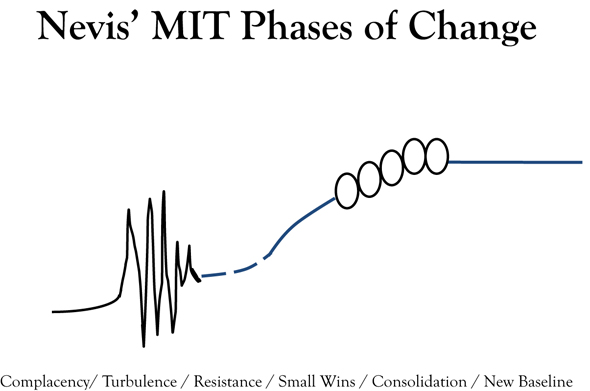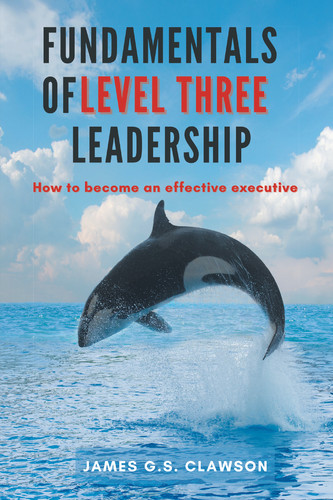125. The MIT (Nevis) Change Model
Concept
A team of researchers led by Edwin Nevis at MIT developed a life cycle model of the change process.20 They characterized the change process as a progression from complacency through turbulence, resistance, small wins, consolidation, and a new baseline. Again, one can immediately see similarities with pieces of the other change models. Complacency and a lack of urgency. Turbulence and disconfirming data. Resistance and denial. Small wins and small wins(!). Consolidation and consolidation. And New baseline and anchoring. I infer that these writers are observing the same phenomena and applying somewhat different labels and perhaps somewhat different transition boundaries. Transitions are likely to be the least clear while the middle of a phase or stage would be the clearest and therefore most observable.
Nevis’s team (Anthone DiBella and Janet Gould) thought of the change process as a learning process. Learning is change, change is learning. Again, major overlaps with other authors’ views as introduced in the Organizational Learning chapter above. The MIT group argued that a learning organization had three main elements: strong bases for developing new products and services, a culture of continuous improvement, and the ability to renew itself.21
They also argued that there were seven learning orientations: knowledge source, product-process focus, documentation mode, dissemination mode, learning focus, value-chain focus, and skill development focus. One can see how a company might be oriented toward one of these or another—and still be a learning organization. Whatever the orientation, the team observed that the successful organizations actively supported the learning systems in their companies.
Example
Many companies go bankrupt by not recognizing the changes in the world around them. Buggy whips, carriages, tube-based televisions, and others.
Companies experience turbulence when they begin to get disconfirming data: declining sales, declining profits, customer dissatisfaction, and so on.
Companies who wither and die are usually stuck in denial, another form of resistance. Detroit’s response to the smaller, more efficient Japanese car invasion is an example.
Small wins perhaps overlooks an experimentation phase from which those small wins emerge. IDEO currently emphasizes the importance of running small experiments to find the right solutions.
Getting a company to change permanently by consolidating changes and small wins into a larger culture is a challenge. I had one client who made a major organizational change and then five years later went back to its original design. The bowstring snapped back.
Diagram

Challenge
1. Can you map the MIT model on your company’s last change effort?
2. What do you think about the lack of an experimentation phase?
3. What are your thoughts on “learning is change, change is learning?”
20 https://sloanreview.mit.edu/article/understanding-organizations-as-learning-systems/
21 Outlined in the article above and in their book. 1996. Intentional Revolutions, Jossey-Bass.
